#fuel cell
Text

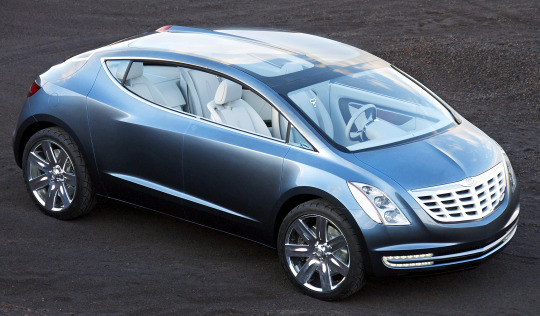
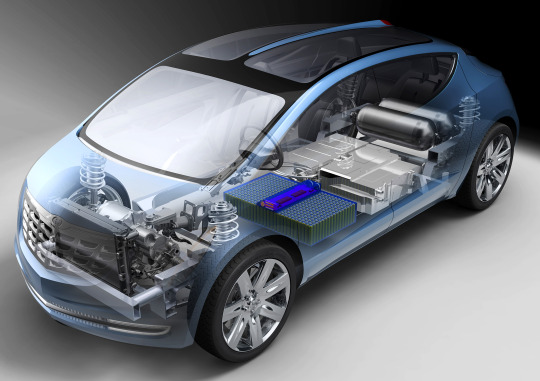
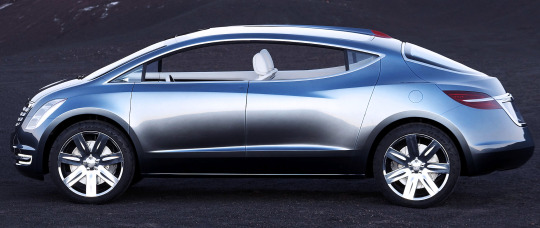

Chrysler ecoVoyager Concept, 2008. Presented at the NAIAS, designed by Greg Howell (exterior) and Tyonek Stump (interior), a radically “cab-forward” MPV with fuel-cell powertrain
#Chrysler#Chrysler ecoVoyager#concept#prototype#fuel cell#hydrogen fuel cell#futuristic#NAIAS#2008#design study#pillarless#Greg Howell#cab forward#2000s#show car#MPV
179 notes
·
View notes
Text
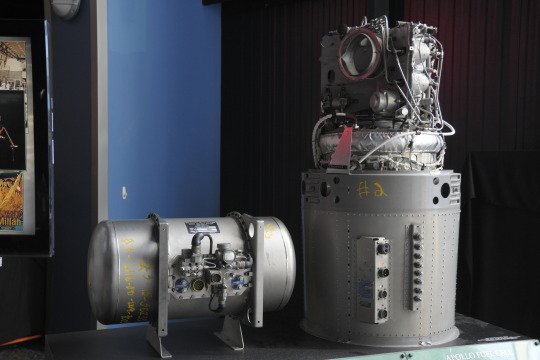
Gemini fuel cell vs. Apollo fuel cell - US Space & Rocket Center, Huntsville, AL
24 notes
·
View notes
Text

3 notes
·
View notes
Text
5kW hydrogen fuel cell system👏👏🎊

When the system is connected with hydrogen, it can output stable current. (We can also match the hydrogen supply system according to customer requirements.)
If you are interested, you can contact me by email!
Email: [email protected]
2 notes
·
View notes
Text
Computational Modeling Aspect of Fuel Cells: A Continuous Powerhouse
Fuel cells are called continuous powerhouses because it is a device that does not store energy but runs continuously to produce electricity as long as the fuel is provided. The byproduct of the fuel cell is water, hence the “clean energy” or “zero carbon emission” technology.
#fuel cell#fluid dynamics#continuous powerhouses#zero carbon emission#clean energy#Anode and cathode reactions for PEMFC#Polymer Electrolyte Membrane Fuel Cell (PEMFC)#Direct Methanol Fuel Cells (DMFC)#Alkaline Fuel Cells (AFC)#Phosphoric Acid Fuel Cells (PAFC)#energy#Electricity generation
0 notes
Video
youtube
FuelCell SC Elite 4 Running Shoe | New Balance
0 notes
Text
ISRO Launches Fuel Cell For Testing Future Power Sources on Upcoming Bhartiya Space Station
The Indian Space Research Organization (ISRO) has successfully launched the Fuel Cell Power System (FCPS) aimed at testing the power source for the future Indian Space Station. This experimental initiative was part of the PSLV-C58 mission, which also transported the XPoSat observatory into space.
Following the successful launch of the XPoSat mission, ISRO’s chief S Somnath unveiled the progress. The Vikram Sarabhai Space Center (VSSC), an integral division of ISRO, has crafted this fuel cell, introducing innovative technology aimed at establishing a sustainable and efficient power supply for space exploration.
The Fuel Cell Power System (FCPS) was sent into space via the PSLV Orbital Experimental Module (POEM), which is the fourth stage of the Polar Satellite Launch Vehicle. Originally positioned in a 650 km orbit alongside the X-ray Polarimeter Satellite (XPoSAT) mission, the POEM fourth stage underwent a sequence of controlled maneuvers, reducing its orbit to 350 km.
This planned orbit reduction played an important role in ensuring the necessary stability for conducting onboard experiments, including those involving the FCPS.
Revolutionizing Long-Duration Space Missions

Anticipated as a game-changer for extended space missions, this advanced fuel cell technology stands apart from conventional power systems. It utilizes the advantage of converting chemical energy from fuels into electricity through electrochemical reactions to ensure a substantially longer supply of electrical energy.
To Read More Click here...
#science#science blogs#new updates#future power#new sources#space station#ISRO#Fuel Cell#Space Missions#electrical energy
0 notes
Text
Figure 12.36 illustrates an early design of a hydrogen-oxygen fuel cell.

"Chemistry" 2e - Blackman, A., Bottle, S., Schmid, S., Mocerino, M., Wille, U.
#book quotes#chemistry#nonfiction#textbook#fuel cell#hydrogen fuel cells#hydrogen oxygen fuel cell#hydrogen#oxygen
0 notes
Text
The net cell reaction, after making electron loss equal to electron gain, is:
2H2(g) + O2(g) → 2H2O(l) (cell reaction)

"Chemistry" 2e - Blackman, A., Bottle, S., Schmid, S., Mocerino, M., Wille, U.
#book quote#chemistry#nonfiction#textbook#cell reaction#fuel cell#hydrogen#oxygen#chemical reactions
0 notes
Photo

Toyota Crown Unveiled With An Unconventional-For-Crown Look
Love it!
Follow us for more Tech Culture and Lifestyle Stuff.
0 notes
Text
The global electrolyzers market is expected to grow from an estimated USD 1.2 billion in 2023 to USD 23.6 billion in 2028, at a CAGR of 80.3% according to a new report by MarketsandMarkets™.
#electrolyzer#electrolysis#electrolyzers#electrolyzers market#energy#power#power generation#renewable energy#renewable#renewable fuel#renewables#green hydrogen#green hydrogen production#fuel cell#fuel cells#hydrogen fuel#hydrogen fuel cells#fuel cell electric vehicles
0 notes
Text
Drone Batteries: Powering the Flight
In the realm of unmanned aerial vehicles, or drones, the heart that keeps them soaring through the skies lies within their batteries. These energy storage devices have evolved significantly, providing drones with the power needed for flight, cameras, and various other functions. In this blog, we’ll embark on a journey through the world of drone batteries, exploring their types, technologies, and…

View On WordPress
0 notes
Photo

CaetanoBus & Temsa to develop hydrogen coach
CaetanoBus and Temsa want to launch a hydrogen-electric coach in 2024. The cooperation between the Portuguese and Turkish manufacturers specifies that the first product will be a two-axle H2 coach based on an electric version of the Temsa HD12. The partners are aiming for series production of the dual-axle version in 2025. A three-axle hydrogen […]
https://www.electrive.com/2023/09/13/caetanobus-temsa-to-develop-hydrogen-coach/
0 notes
Text
Nikola Hydrogen Fuel Cell Electric Vehicle Demand Surpasses 200
PHOENIX, Aug. 2, 2023 /PRNewswire/ — Nikola Corporation (Nasdaq: NKLA), a global leader in zero-emissions transportation and energy supply and infrastructure solutions, via the HYLA brand, announced that Nikola and its dealer network, with most of the agreements between fleets and dealers directly, have surpassed 200 sales orders for the Class 8 Nikola hydrogen fuel cell electric vehicles. The…
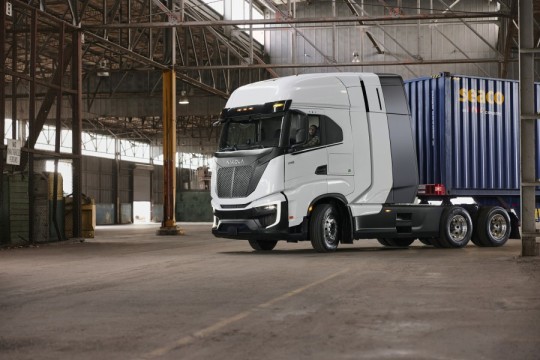
View On WordPress
1 note
·
View note
Text
Fuel Cell or Battery Electric Vehicles – The Future of Mobility

Introduction
As we already know, the depleting deposits of fossil fuels and the adverse effect of their combustion on the environment have propelled automakers to turn to alternate sources of energy to drive vehicles.
These sources need to be diverse and sustainable energy solutions, such as battery electric vehicles (BEVs) and fuel cell electric vehicles (FCEVs).
Although the automotive industry has already started looking at sustainable solutions, there is a lot of debate regarding the prioritization of BEVs over FCEVs, particularly because of the limited available reserves of lithium, which is a major component in lithium-ion batteries.
Many researchers are hence advocating the use of fuel cells, which convert the chemical reaction of a redox reaction into electricity.
However, the behavior of a fuel cell in an automotive battery is still in the R&D phase, which is why most automakers are still hesitant about using it in production vehicles. This article aims to address these concerns about this BEV-FCEV debate.

FCEVs or BEVs | Dorleco
Source: What is a Fuel Cell?
The Interplay between BEVs and FCEVs
One of the popular misconceptions in this particular debate is that lithium-ion batteries and fuel cells are competing technologies. It is important to understand that batteries are here to stay in the industry for a long time into the future now as one of the primary energy sources.
What lithium-ion cells and fuel cells do is present diverse options for solving the efficiency, emissions and sustainability problems.
Both these chemistries aim to enhance the solutions for the electrification question that the industry is currently facing.
Batteries are forecasted to be the central piece of the electrified solution in the future, and fuel cells will aim at enhancing them rather than replacing them.
This will be essential in addressing the issue of recharging time for batteries, especially for heavy-duty transport.

FCEVs or BEVs | Dorleco
Source: Electric HD trucks – when will hype become a reality? | Automotive World
Challenges in Today’s Market
The first factor that always comes into question when talking about sustainable mobility is Range, especially when talking about heavy-duty transport.
Combustion engine trucks with very high payload capacity normally have a large fuel tank, in the vicinity of 200 to 300 litres (50-80 gallons).
This often allows them to drive up to 400 miles (subject to payload) before having to stop for a refueling break.
However, the development of lithium-ion cells, as well as fuel cells, is still at an early stage, and so, none of the solutions has met the range demands of heavy-duty transport yet.
Secondly, a high-capacity battery will most likely be very heavy, which increases the amount of load, which in turn demands more energy.
For instance, the weight of the battery in the Hummer EV is anticipated to be equivalent to the Honda Civic. One solution to this vicious cycle is high-energy-density batteries (or fuel cells).

FCEVs or BEVs | Dorleco
Source: Hydrogen Fuel Cells vs. Battery Electrics: Why Fuel Cells are a Major Contender
Heavy-duty transport will be an interesting challenge for automakers since there are quite a few tradeoffs that automotive designers have to work with while using Li-ion cells.
There is a relatively lower cap on the maximum allowable weights on each axle at the moment, which means designers need to reduce the battery size, thus affecting range.
Furthermore, by limiting the payload capacity, there is a decrease in the load that a vehicle can carry per trip, which doesn’t exactly make for viable logistical economics.
Finally, there is always going to be the efficiency vs performance tradeoff that automakers have to deal with.
BEVs vs FCEVs
Downtime is one of the factors where FCEVs currently outclass BEVs. The refueling time for an FCEV is almost as low as an ICEV (internal combustion engine vehicle), thus making it an attractive solution for long-distance drives.
For BEVs, the solution to this issue would be the development of megawatt-level charging stations. Reducing the charging time also allows designers to reduce the battery size (and hence weight), as it allows drivers to stop as frequently as needed for charging.

FCEVs or BEVs | Dorleco
Source: Hydrogen cars, fuel cells, etc.: what you need to know | BMW.com
Another major advantage for FCEVs is that they have the potential to utilize renewable energy solutions on a larger scale and increase the adoption of sustainable power sources faster. They also provide necessary enhancements to the operational and performance gaps found in existing batteries.
In general, FCEVs can prove to be more effective than BEVs for a driving style that mainly consists of long-distance travel, such as commercial trucks.
Furthermore, the payload-bearing capacity of an FCEV is more than a BEV on account of fuel cell powertrains being significantly lighter, thus allowing engineers to increase the energy capacity without affecting the overall weight by much.
The biggest advantage that a lithium-ion battery has over the fuel cell is the ability to meet the powertrain dynamic demands.
There may be many fuel cell configurations being developed right now for dynamic behavior, however fuel cells are inherently meant for non-dynamic/static behavior. With researchers in the lithium-ion battery industry working on solid-state cell solutions for mobility, there is hope for better dynamic behavior from batteries soon.
So, is one better than the other in all cases?
The debate of using BEVs over FCEVs, or vice versa, should be tackled from a different perspective, as it is more a question of which solution is befitting for which transportation needs.
BEVs can effectively serve a larger sector in the industry, but their shortcomings can be dealt with by sustainable FCEV solutions.
Lighter powertrains in FCEVs allow for an increase in energy capacity without affecting the overall weight, which in turn can allow for a better range.
Fuel cells also exhibit higher payload-bearing capacity and quicker charging (or refueling time), making it an attractive proposition for heavy-duty and long-distance applications.
The drawback of a fuel cell is that hydrogen is energy-intensive when it comes to production as well as storage, not to mention that the development of fuel cells is still in its early stages, making it quite costly as compared to lithium-ion batteries. Furthermore, lithium-ion batteries exhibit much better dynamic behavior than fuel cells.
BEVs and FCEVs aren’t two sides of the same coin by any means. Instead, one needs to look at them as two different paths that can be taken to solve the same problem – tackling the challenges of sustainable mobility.
BEV and FCEV Efforts at Dorle Controls
At Dorle Controls, we develop model-based software for fuel cells as well as battery chemistries. On the development side, we are working on SOC estimation algorithms using Kalman filters, cell balancing algorithms, as well as the thermal modelling and management of both these energy sources.
Integration of fuel cell controller with the BMS controller on a CAN architecture is in focus, as is the verification and validation of batteries through charging and discharging tests. We can also help you out with rapid control prototyping for battery systems using RaptorDev tools.
To know more about our software development capabilities for battery-specific requirements, write to [email protected].
Read More On
#Fuel Cell#Battery Electric Vehicles#BEVs over FCEVs#fuel cells#Advanced Driver#automotive industry#mechanical control#technology
0 notes
Text
A gradual shift to clean and renewable energy requirements has brought many questions related to wind energy, hydrogen energy, and electrochemical energy. The cutting-edge research in this field includes the design of wind turbines, wave energy, water splitting photocatalytic systems, fuel cells, and batteries. The answer to energy-related questions involves a keen introspection and coupling of multiple physics for which Paanduv is well suited to provide accurate solutions with all the captured physics.
0 notes